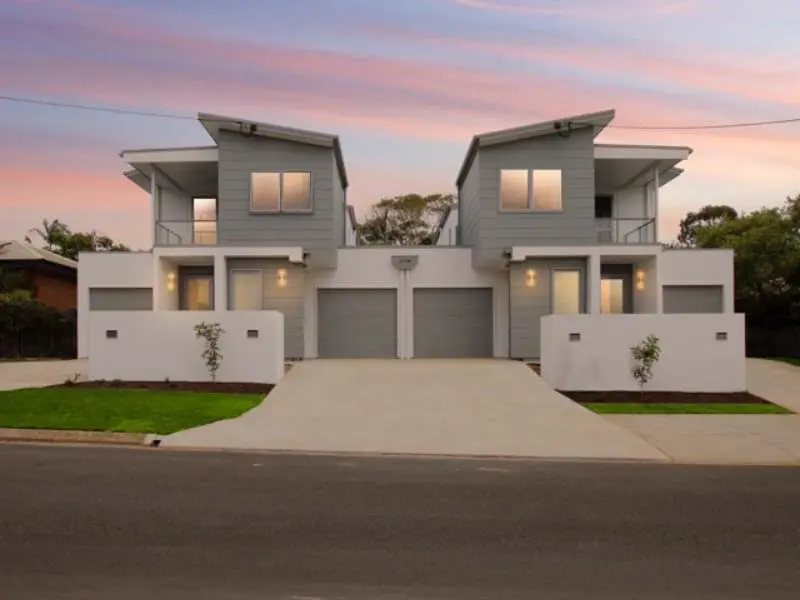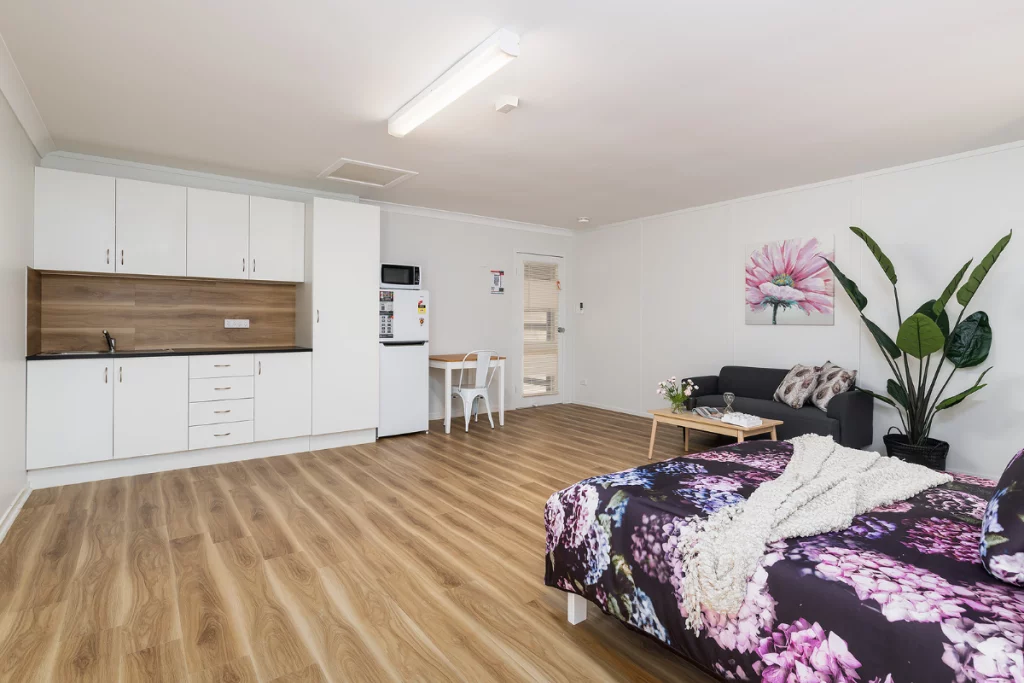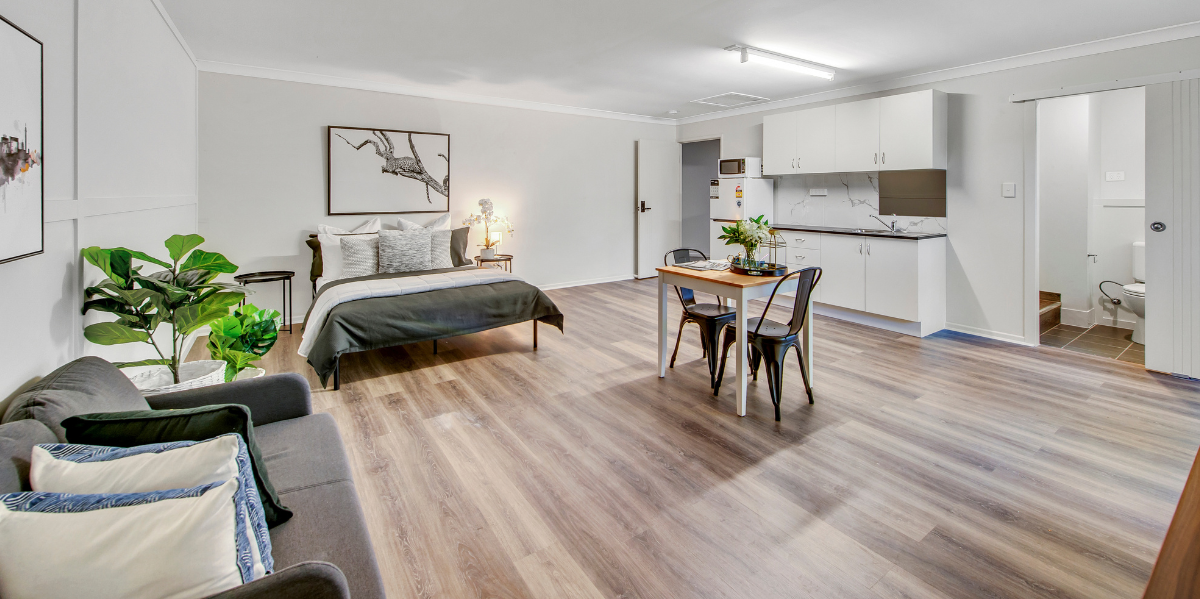I want to talk about this outdated belief that persists in property investing. It says that after you’ve bought a place, all you need to do is sit back and rake in the rent as your capital growth balloons. Cha-ching – your work is done!
If you’re holding on to that belief moving into 2022, I’m afraid you’re missing a trick.
The two growth opportunities for building a property portfolio
Traditional property investing has always focused on capital growth, and the talk is often about property hot spots. Investors are urged to find the next red-hot postcode, so their property can magically escalate in value overnight and they can sell it for a motza. It’s sometimes called the “BHP” strategy: buy, hope and pray that it’s on an upward trajectory.
To me, this is a lazy way for an investor, or even a home-owner, to create wealth.

Don’t get me wrong, capital growth is important. But as I told Adrian Franklin in the Ticker HOME we recorded recently, in today’s market you need to be a proactive participant in the growth of your properties. So you also need to focus on a second kind of growth – manual or manufactured growth.
This means looking at a property and seeing how you could add value. The ultimate goal is to spend as little as possible to gain as much extra value as possible. This kind of manufactured growth has one great advantage over the BHP approach: you’re in control.
Double dipping is a good thing
When you double dip into the hummus at a party, it’s considered anti-social. (I would never do this! Well hardly ever.) But double dipping in property investing – getting the advantage of both capital and manufactured growth – will make a huge, positive difference at the end of your working life.
I’ve spent decades figuring this strategy out, so here are my favourite ways to create, not wait. With a warning: it all hinges on you approaching your search armed with lots of relevant investing knowledge.


The most obvious one – renovate
This is the opportunity that springs to mind for most people who are building their property portfolio. You might do some simple cosmetic makeovers, like painting, changing door handles, tidying your landscaping – to manufacture growth.
Taking it a step further, you might replace the kitchen or bathroom, put up a wall, remove a wall and add a beam – this needs approval through a certifier or building surveyor. It’s often called an assessable application or renovation.
Or if you’re more ambitious (and have the cash) – embark on some major structural renovation that extends up or out, adding bathrooms, kitchens or extra bedrooms. This one definitely needs council approval.
If you’ve done the research about what buyers want in your neighbourhood, hopefully you’ve now increased the property’s value without overcapitalising. And/or, you’ve made the property more attractive to renters, who will stump up more rent. Manufactured growth – tick.
SCROLL DOWN to find out the ‘unicorn’ of strategies when it comes to manufacturing growth in your property.


The granny flat or studio trend
All around Australia people are adding small, self-contained structures to the backyards of their homes and investment properties. Depending on where it’s located, it might be labelled an “ancillary dwelling” or an “auxiliary dwelling” or a “secondary dwelling”.
In some areas you can rent that granny flat or studio out to a separate tenant, which boosts your income. And the value of the property increases as its utility and rentability increase.
Be aware that both state governments and local councils have rules and codes relating to granny flat and studio approvals. Check your zoning too, as well as minimum block size, maximum building size and boundary clearances.
Do the duplex
Don’t forget this option – replacing a single dwelling with two houses side by side on a block. When done right, this could significantly increase the value of your property investment portfolio. But it is, of course, dependent on having a big enough piece of land and the council approval to do it.
While you’re on your property search and you’re considering a particular property, spotting a duplex on the street is a good sign. It’s more likely you can do the same thing with your land.


Subdivide and conquer
I’ve talked about this in my Top 5 tips for creating property growth. It’s when you take a block of land and create smaller parcels out of it. It could be ‘one into two’, ‘one into three’, or even a whole master plan for the land. Splitter blocks, battle axe blocks – these are some of your options.
Now I know this kind of talk raises alarm bells for a lot of passive investors who see it as a stressful and complex exercise. But I think you should seriously consider it for the right property. Many other successful investors have paved the way – again, it’s about doing your due diligence.
Remember though, that when you’re buying your land, you need to have subdivision already in mind, to ensure the block is big enough and has the potential to be chopped up. Different councils have different planning schemes, minimum block sizes and frontage, zonings and density.
They even have different terminology when they talk about subdivision. A meeting with a local town planner is highly recommended.
Need mortgage help? Listen to my Small Talk Big Ideas Podcast with residential lending expert, Paul Steele.


Create a co-living community
If you’re looking at buying a larger, established house, ask yourself whether you could create a co-living property, where you provide more affordable housing for renters, and receive more rent in the process. This is what my HI-RES strategy is all about.
We have a heap of success stories to share, about people who have turned a standard home into a multiple-occupancy dwelling and set themselves up for the future.
If you’re genuinely committed to building your property portfolio, these can provide some real inspiration.
The unicorn – one property that does it all!
It’s amazing when you do find a unicorn – where you can tick off a whole bunch of strategies with one property. Stack them up, if you like.
I know of a property investor who purchased a property with an existing house and subdivided it into two blocks. And on each of those blocks they built a duplex. So effectively they turned one dwelling into four, and then put co-living on top of that.
Because it was in a warm spot, not a hot spot, they also had capital growth.
It was a brilliant outcome, financially. The more strategies you can stack, the better off you are in your active investing journey.
LISTEN to ‘How to manufacture property growth’ and lots of other insights at Ticker HOME.


But unicorns are rare
As long as you’re able to do one, maybe two, of the above strategies, you’re backing a winner.
Even in 2021, when there’s talk of property prices rising to record highs, I don’t subscribe to the “sit back and wait for growth” school of thought. That’s very FOMO driven, and people are buying property for the sake of buying it, at prices that are way too high, all in the hope of having overnight capital growth. Actually, they may end up worse off than when they started.
So the moral of the story is: when you’re out there on the hunt, building your property portfolio, you need to have this shopping list of strategies in your mind. And if you haven’t already done it, you need to change your way of thinking to become an active investor.
Does that mean you have to choose between getting 10% capital growth on a property, or turning it into four properties as part of your manual growth strategy? Certainly not. You can get capital growth ON TOP of that strategy. You can double dip til the cows come home. (Sorry about the mixed metaphor.)




